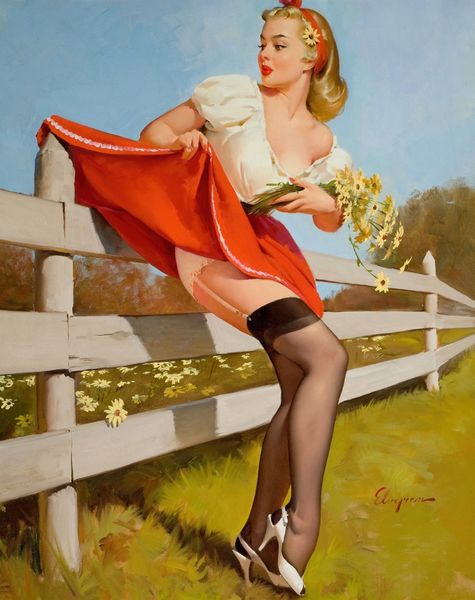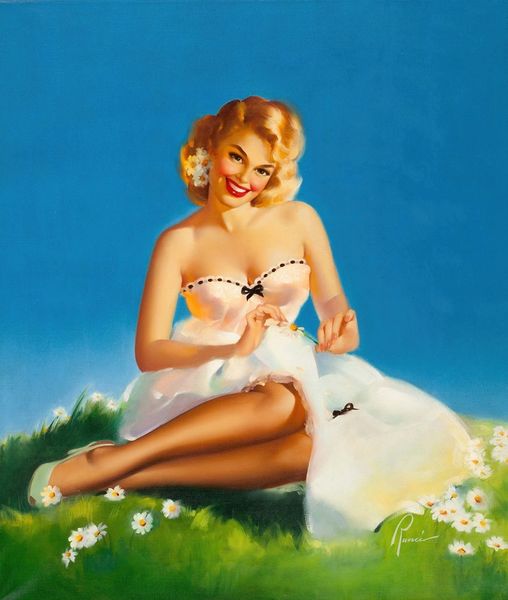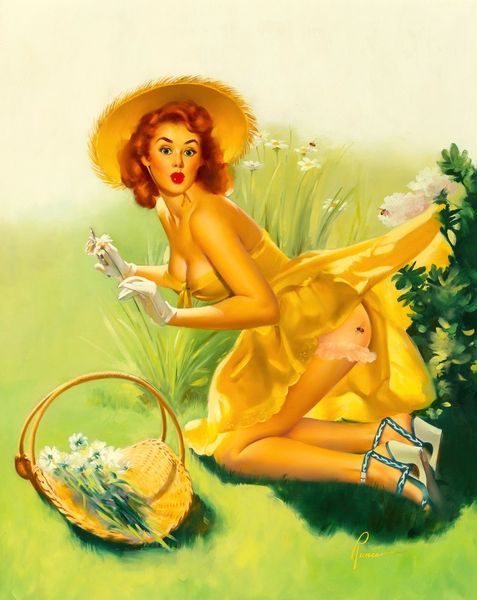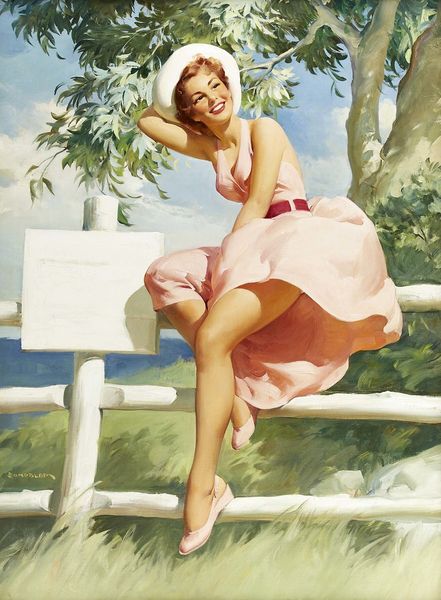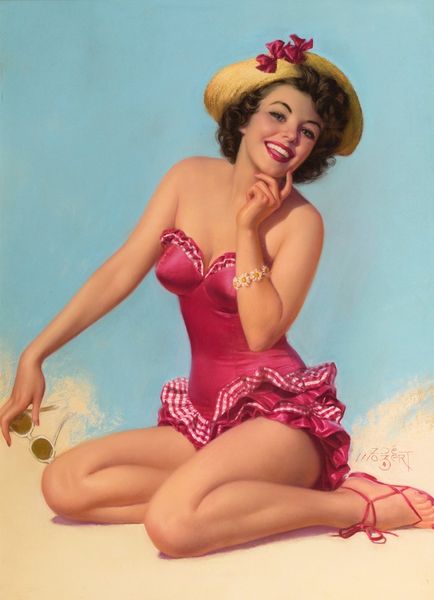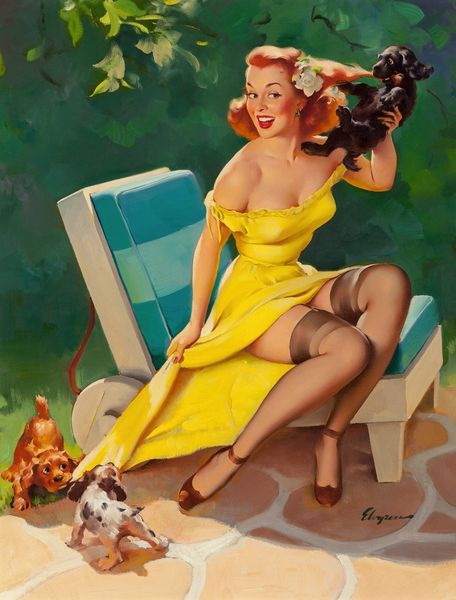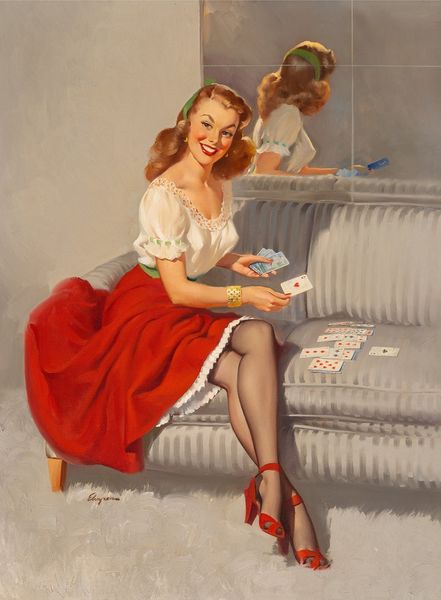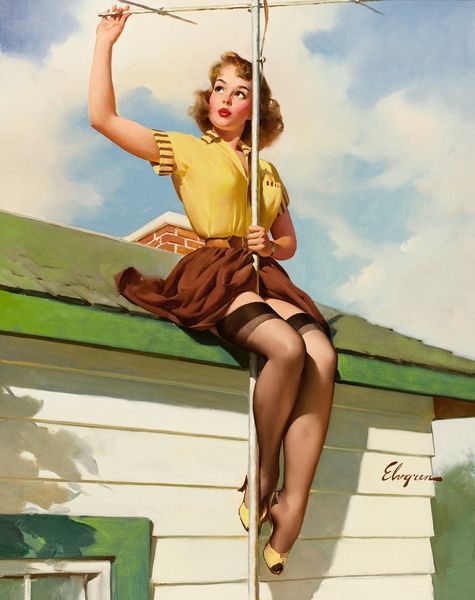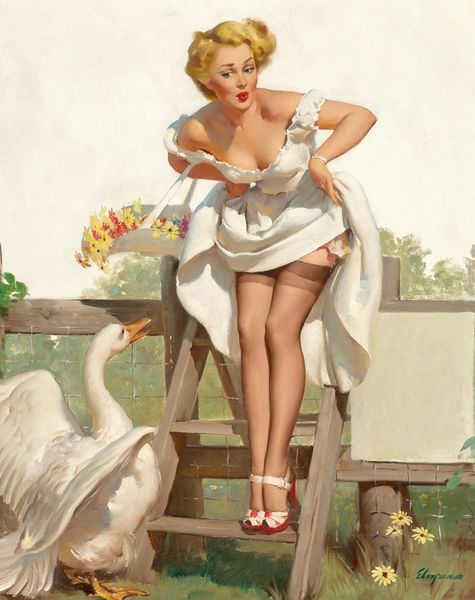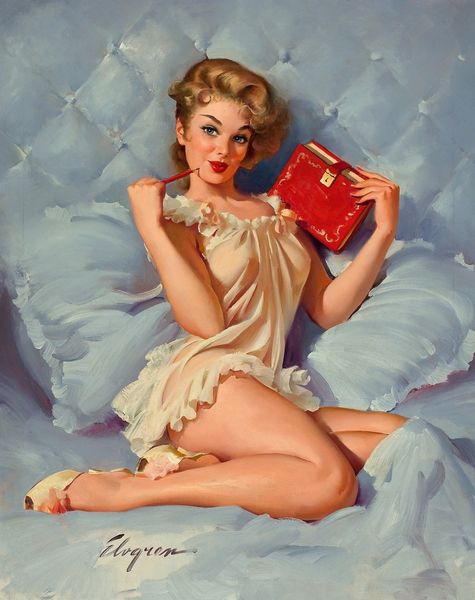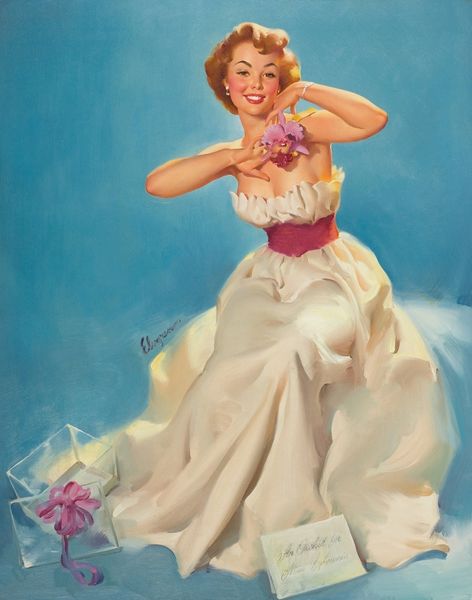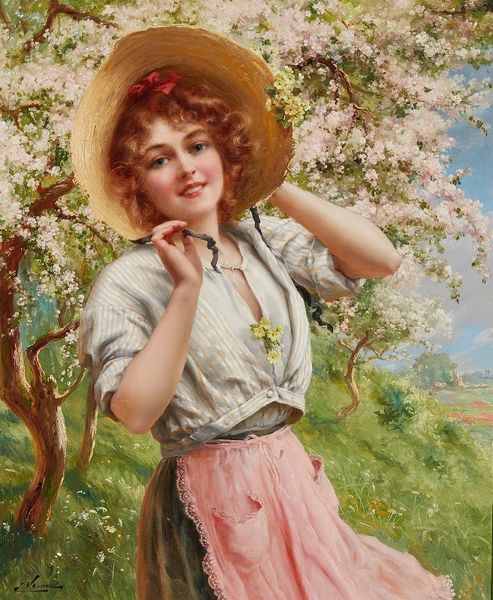
Copyright: Modern Artists: Artvee
Editor: Gil Elvgren's "Daisies Are Telling," painted in 1955, presents a very idyllic, almost dreamlike scene. There's a sense of manufactured innocence that I find fascinating. What do you see in this piece? Curator: It’s fascinating how Elvgren encapsulates a particular type of femininity popular in mid-century America. Consider the social context: post-war prosperity, idealized domesticity, and the burgeoning consumer culture. The woman in this painting is presented as charming, demure even, yet overtly sexualized, a commodity of sorts. How does that contrast strike you? Editor: It's interesting that you mention "commodity." It does seem that her attractiveness is the point. Do you think it’s just reinforcing those older gender roles, or is there something else at play? Curator: The "pin-up" style itself, while seemingly objectifying, was consumed largely by men in traditionally male spaces - mechanics, soldiers, etc. The painting normalizes, perhaps even celebrates a heteronormative, patriarchal view of the world, and in the guise of "innocent fun". Elvgren sold dreams and desires. But what do we make of those desires today, knowing their complex and often harmful legacy? Editor: I see what you mean. It does hold a mirror up to the past, revealing the accepted norms that, in retrospect, appear problematic. But also the beauty of the style persists and can make for really striking images. Curator: Exactly! And reflecting on that beauty, and those troubling aspects, is where the power of art history truly lies, especially in dialogue with contemporary theory. Editor: I'm glad we looked closer! There’s definitely more to consider beyond the surface appeal. Curator: Agreed! Analyzing artwork this way definitely helps give the context needed to fully grasp an era's mindsets.
Comments
No comments
Be the first to comment and join the conversation on the ultimate creative platform.
